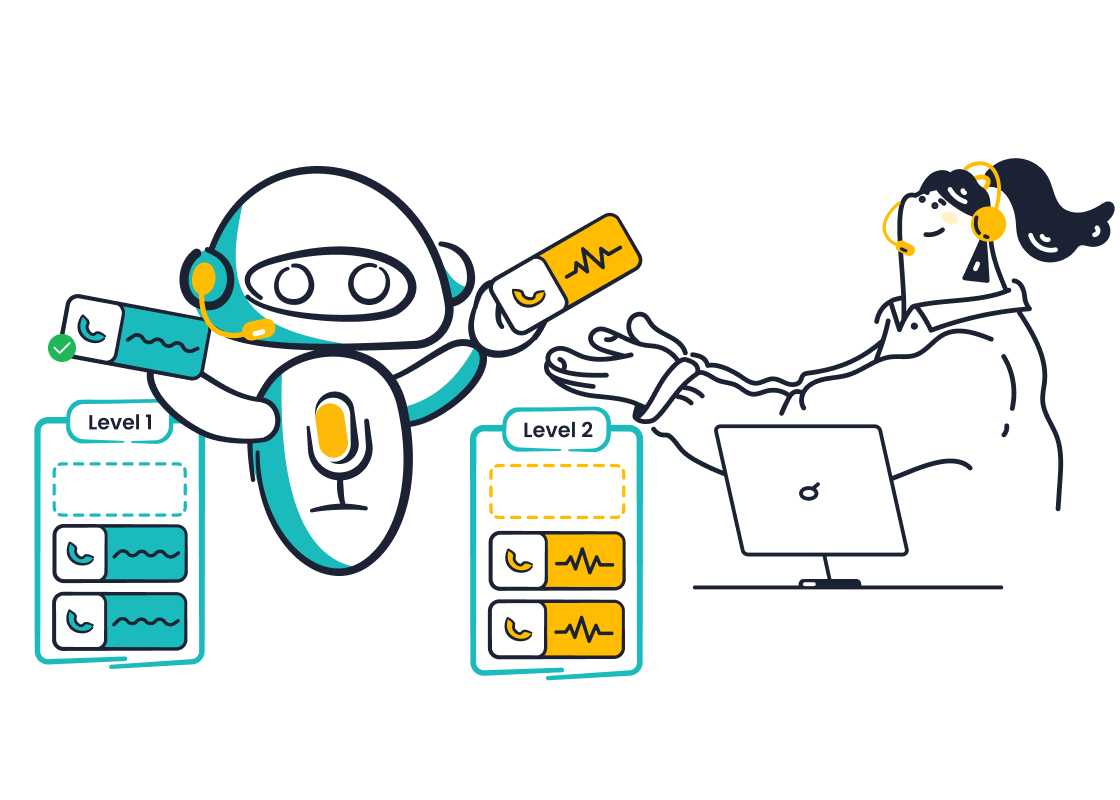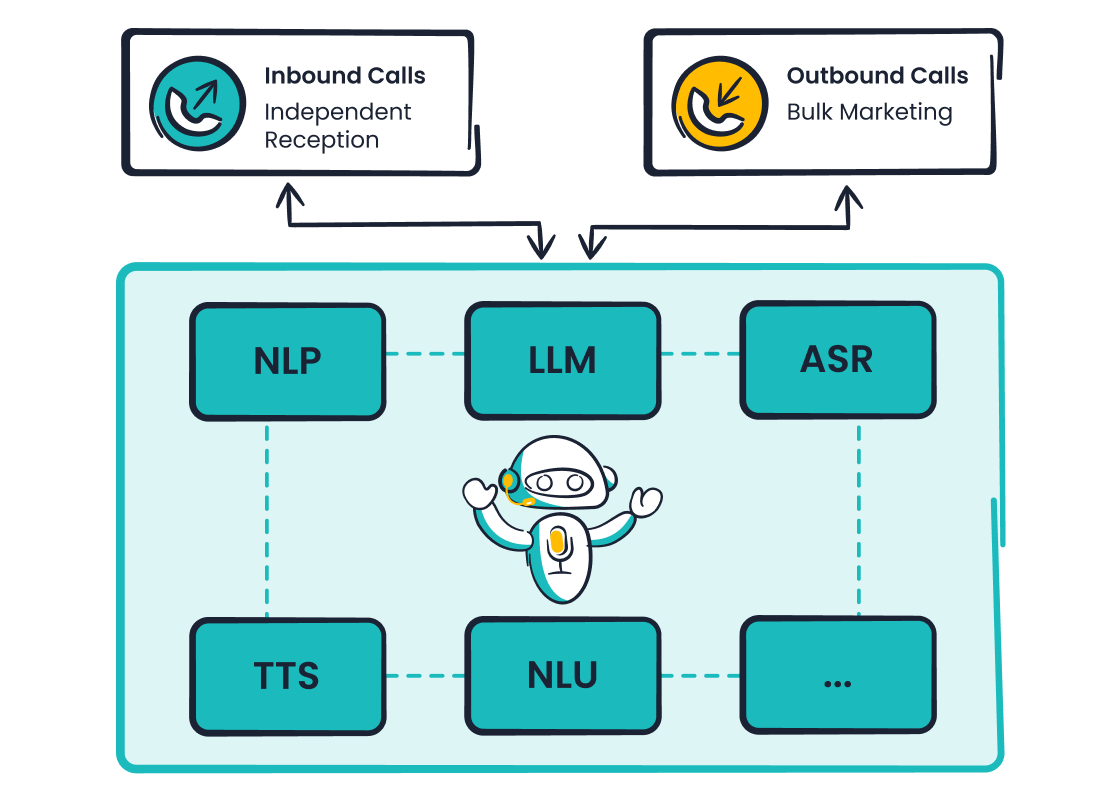Future of CX Customized Service Trends

The future of customer experience anticipates customer needs using AI-driven hyper-personalization. This advanced personalization builds deep customer trust and enhances customer engagement. In fact, 91% of consumers are more likely to shop with brands offering this level of personalization.
Adopting these customer service trends is key. Solutions like the Sobot call center, powered by Sobot AI from Sobot, deliver the customized service for hyper-personalized experiences. This creates a seamless experience, defining the future of customer experience and its related customer service trends.
Achieving Hyper-Personalized Experiences with AI

Artificial intelligence (AI) is redefining the customer experience by moving companies from basic personalization to true hyper-personalization. This evolution allows businesses to deliver unique, real-time interactions that anticipate customer needs. The result is a more engaging and satisfying journey for every customer.
From Personalization to Hyper-Personalization
Traditional personalization often groups customers into broad segments based on past purchases or demographics. Hyper-personalization, powered by AI, creates a unique experience for each individual. It analyzes granular, real-time data like browsing behavior and location. This allows for a proactive approach, adapting the customer journey instantly instead of just reacting to past actions. This shift delivers a deeply relevant and tailored experience.
Predictive Analytics for Customer Needs
Modern AI uses predictive analytics to forecast future customer behavior. By analyzing data from past purchases, browsing history, and even social trends, AI models can anticipate what a customer might want next. This enables businesses to offer relevant product suggestions and create smarter marketing strategies. This forecasting turns the support function into a proactive tool for building loyalty.
Real-Time Data for Tailored Journeys
Creating tailored journeys depends on high-quality, real-time data. AI systems gather information from many sources, including:
- Website analytics and mobile app usage
- Customer Relationship Management (CRM) systems
- Social media platforms and email campaigns
AI-Powered Retail Recommendations
In retail, AI-powered recommendations have a major impact. They can increase conversion rates by over 20% by showing each customer the products they are most likely to buy. For example, Sobot's AI Solution for retail uses generative AI to provide scenario-based support. This technology helps reduce cart abandonment and optimizes promotional campaigns. By offering personalized solutions, it delivers the personalized service that modern shoppers expect, turning browsers into loyal buyers.
Proactive and Predictive Customer Support
The future of customer service moves beyond waiting for problems. It involves a proactive approach where businesses use data to resolve issues before a customer even notices them. This shift transforms the customer experience from a reactive process into a predictive one, building trust and loyalty. Effective experience management is central to this evolution.
Shifting from Reactive to Proactive Service
Traditionally, customer service has been reactive. A customer has a problem, contacts support, and waits for a solution. Proactive service flips this model. It uses data to anticipate and solve issues ahead of time. This approach to experience management builds stronger customer relationships by showing that a business cares. It also reduces support costs by preventing problems from escalating. Businesses gather data from many sources for this proactive experience management, including:
- Customer interaction history (social media, email, phone)
- Product usage patterns and login frequency
- Support ticket data and resolution rates
- Customer feedback from surveys and reviews
Proactive Experience Management
Proactive experience management involves using technology and data to stay ahead of customer needs. AI and analytics help forecast behavior and understand customer emotions. This allows companies to offer personalized service and empower each customer with self-service tools like knowledge bases. Proactive communication is key to this experience management strategy. Notifying a customer about a service interruption before it affects them builds trust. This level of experience management turns a potential negative into a positive customer engagement opportunity.
Turning Support into a Loyalty Function
When support becomes proactive, it evolves into a powerful tool for loyalty and retention. This approach to experience management makes a customer feel understood and valued. Addressing potential problems before they arise boosts overall customer satisfaction and enhances the brand's reputation. This positive customer experience directly contributes to higher customer lifetime value. Excellent experience management ensures that every interaction strengthens customer engagement and satisfaction.
Sobot's Voicebot for Outbound Marketing

Modern tools make proactive strategies practical and scalable. For example, Sobot's Voicebot enables automated personalized services for outbound marketing and service alerts. A business can use the voicebot to automatically inform a customer about shipping delays or offer them a special promotion based on their browsing history. This use of AI demonstrates a proactive approach that not only improves customer satisfaction but also boosts sales. It is a perfect example of how technology can deliver a superior experience.
Seamless Omnichannel Integration
Today's customer journey is not linear. A customer might start on social media, switch to a live chat, and finish with a phone call. A truly seamless experience requires unifying these touchpoints. This ensures the conversation continues smoothly, no matter how the customer chooses to connect.
Unifying the Omnichannel Customer Experience
A unified omnichannel approach is essential for a superior customer experience. It brings all communication channels together into one cohesive system. This integration allows support teams to see a complete history of every customer interaction. For example, Sobot's all-in-one contact center solution unifies channels like Live Chat, Voice Call Center, and WhatsApp API into a single workspace. This creates a powerful platform for consistent customer engagement and delivers seamless services.
The Need for Consistent Context
Maintaining context is critical for quality service. When a customer has to repeat their issue on each new channel, it creates frustration. This high-effort experience can damage loyalty.
Research shows that 96% of customers with high-effort service interactions become more disloyal. A low-effort, consistent experience is key to retention.
A unified system provides agents with the full story. This empowers them to solve problems faster, boosting customer satisfaction and building trust.
Integrating Digital and Physical Touchpoints
The best strategies connect the digital customer experience with physical interactions. This means online browsing data should inform in-store conversations, and vice-versa. Syncing digital and physical worlds gives businesses a complete view of the customer journey. This level of integration allows for true personalization and strengthens brand consistency across every touchpoint.
The Impact of a Fragmented Journey
A fragmented journey leads to poor outcomes. It creates internal confusion and frustrates the customer, who feels misunderstood. Leading smart device brand OPPO faced this challenge with its global customer channels. By partnering with Sobot, OPPO integrated its systems to eliminate data fragmentation. This move improved service efficiency and enhanced customer engagement. The result was an 83% chatbot resolution rate and a 57% increase in repurchases, proving that a connected experience drives loyalty.
Balancing AI and Human Empathy

The best customer experience finds the perfect balance between AI efficiency and human empathy. A hybrid model allows businesses to scale support while preserving the personal touch that builds loyalty. In this model, AI handles routine tasks, freeing human agents to solve complex problems where emotional intelligence is key. This collaboration enhances the overall customer experience.
AI for Efficiency and Scale
AI excels at managing high-volume, low-complexity interactions with speed and accuracy. Many brands successfully use AI to handle 40% to 60% of simple inquiries like order tracking or password resets. This strategy involves classifying customer interactions as either transactional (fast answers) or relational (requiring empathy). Assigning transactional interactions to AI optimizes resources and provides the customer with instant solutions. This approach allows a business to deliver a fast and efficient experience for common questions.
Empowering Agents for Complex Issues
When a customer faces a complex issue, they need a human agent. AI empowers these agents with powerful tools to resolve difficult interactions effectively.
- Agent Assist Technology: This AI co-pilot offers real-time guidance during customer interactions.
- Natural Language Understanding (NLU): This technology analyzes conversations to identify customer intent and emotion.
- Large Language Models (LLMs): These models can automatically summarize long interactions, saving agents valuable time.
These tools give agents the context they need to solve problems quickly, turning difficult interactions into positive outcomes.
Augmenting, Not Replacing, Human Touch
Industry experts agree that AI should augment human agents, not replace them. This concept, known as 'collaborative intelligence,' creates a system where humans and AI work together. Humans are essential for training the AI, ensuring data quality, and shaping its personality to reflect brand values like empathy. Research shows that companies perform significantly better when humans and AI collaborate on customer interactions. This partnership makes the entire support system smarter and more effective.
Seamless AI-to-Human Handoffs
A smooth transition from AI to a human agent is critical for a positive customer experience. The handoff must be seamless, with all context carried over. Sobot's Voicebot and Chatbot deliver these automated personalized services, automating over 90% of interactions. When an issue requires a human touch, the system ensures a smooth transfer. Leading brand OPPO uses this model, where chatbots handle repetitive queries. This frees their agents for complex problems, resulting in an 83% resolution rate for AI interactions and proving the power of effective human-AI collaboration. This seamless experience ensures every customer feels supported throughout their journey.
Building Trust Through Data Transparency
Effective personalization relies on customer data, but this creates a challenge. Businesses must balance a tailored customer experience with the growing demand for data privacy. Building trust is no longer optional; it is the foundation of a modern customer relationship. For any business, establishing customer trust is a critical goal.
The Link Between Data and Personalization
Data is the engine that drives personalization. Every piece of information, from browsing history to purchase records, helps a business understand its customer. This understanding allows for a better experience. However, the collection of this data requires a high level of trust. A customer shares their information with the expectation that it will be used responsibly to improve their journey.
Customer Expectations for Data Privacy
Today's customer is more aware of data privacy than ever before. Surveys show that 79% of people worry about how companies use their data. Furthermore, 71% of consumers would stop doing business with a company if it shared sensitive data without permission. This shows that a negative experience with data can quickly destroy customer trust. People expect businesses to be guardians of their information, not just users of it.
A customer wants to feel protected and in control of their data. Building trust means showing them that their privacy is a top priority. This commitment is essential for long-term loyalty.
Transparency as a Competitive Differentiator
In a crowded market, transparency can set a brand apart. Companies that are open about their data practices demonstrate respect for the customer. This honesty fosters customer trust and creates a stronger bond. When a customer understands how their data improves their experience, they are more likely to feel comfortable sharing it. This approach turns data privacy from a legal requirement into a tool for building trust.
Communicating Data Policies Clearly
Clear communication is key to effective data transparency. A business should make its privacy policies easy to find and understand. This helps build a positive customer experience. Best practices include:
- Detailing how customer data is collected, used, and stored.
- Providing clear opt-in and opt-out choices for data processing.
- Offering contact information for a data protection officer.
- Explaining how a customer can submit a request about their data.
This level of openness in personalization efforts shows a company is committed to earning and keeping trust.
Adapting to Top Customer Service Trends
Adapting to the latest customer service trends is essential for any business. It requires a clear strategy to deliver the customized service that modern consumers expect. A practical action plan helps companies stay competitive and improve their customer experience. This plan focuses on data, understanding the customer journey, and empowering teams with the right technology.
Action Plan for Customized Service
A successful action plan for customized service begins with a strong foundation. Businesses should focus on three key areas to keep up with customer service trends. First, they need to unify customer data. Second, they must map the entire customer journey. Third, they should provide employees with advanced AI tools. Following these steps helps create a better experience for every customer.
Invest in a Unified Data Platform
A unified data platform is the core of modern customer service. It collects and organizes information from every customer touchpoint. When choosing a platform, businesses should look for key features.
- Data Collection: It tracks all customer actions, like clicks and purchases.
- Identity Resolution: It links all data to create a single profile for each customer.
- Data Enrichment: It uses AI to estimate a customer's future needs. This central hub provides the clean, organized data needed to understand the customer and follow key customer service trends.
Map the Customer Journey
Mapping the customer journey helps businesses see the experience from the customer's perspective. This process reveals pain points and opportunities for improvement. Companies can use several tools for this task.
- Experience analytics tools show how a customer interacts with a website.
- Voice of customer (VoC) tools gather direct feedback.
- Visualization software helps create clear journey maps. These maps are living documents. They need regular updates to accurately reflect the customer experience and adapt to new customer service trends.
Empower Employees with AI Tools
Empowering employees with AI tools is a critical step in improving customer service. These tools help agents resolve issues faster and more effectively. For example, interaction analytics can suggest solutions based on past successes. Intelligent routing connects a customer to the best agent for their specific problem. This technology augments human skills, leading to a better customer service experience and allowing teams to meet evolving customer service trends.
The future of customer experience rests on five pillars. These are AI-powered hyper-personalization, proactive support, seamless omnichannel journeys, a hybrid AI-human model, and foundational trust. These customer service trends improve customer satisfaction and retention. Businesses that blend technology with a human-centric approach build strong customer relationships. This strategy enhances the customer experience and boosts customer satisfaction.
Solutions using AI help a business deliver this customized service. This focus on the customer experience leads to better retention. Following these customer service trends helps every customer have a positive experience and increases customer satisfaction.
FAQ
How does hyper-personalization improve the customer experience?
Hyper-personalization uses AI to understand each customer individually. It anticipates a customer's needs in real-time. This creates a unique and relevant experience for every customer. This approach builds stronger relationships and improves the overall customer experience by making each interaction feel special.
What is the main goal of proactive customer support?
The goal is to solve a customer's problems before they happen. Businesses use data to find potential issues and fix them early. This proactive experience shows a customer that the company cares. It builds trust and turns support into a tool for loyalty.
Why is an omnichannel strategy important for a business?
An omnichannel strategy unifies all communication channels. A customer can move from chat to phone without repeating information. This creates a seamless journey for the customer. Key benefits include:
- A better customer experience.
- Increased agent efficiency.
- Higher customer satisfaction.
See Also
Leading Cloud-Based Contact Center Services: An In-Depth Review for 2024
Discovering the Foremost Cloud Contact Center Platforms for the Year 2025
Evaluating the Premier Contact Center Solutions: A Comprehensive Analysis for 2024
How AI-Powered Customer Service Agents Are Transforming Support Experiences Now
The Ten Best Voice of the Customer Software Platforms for 2024
